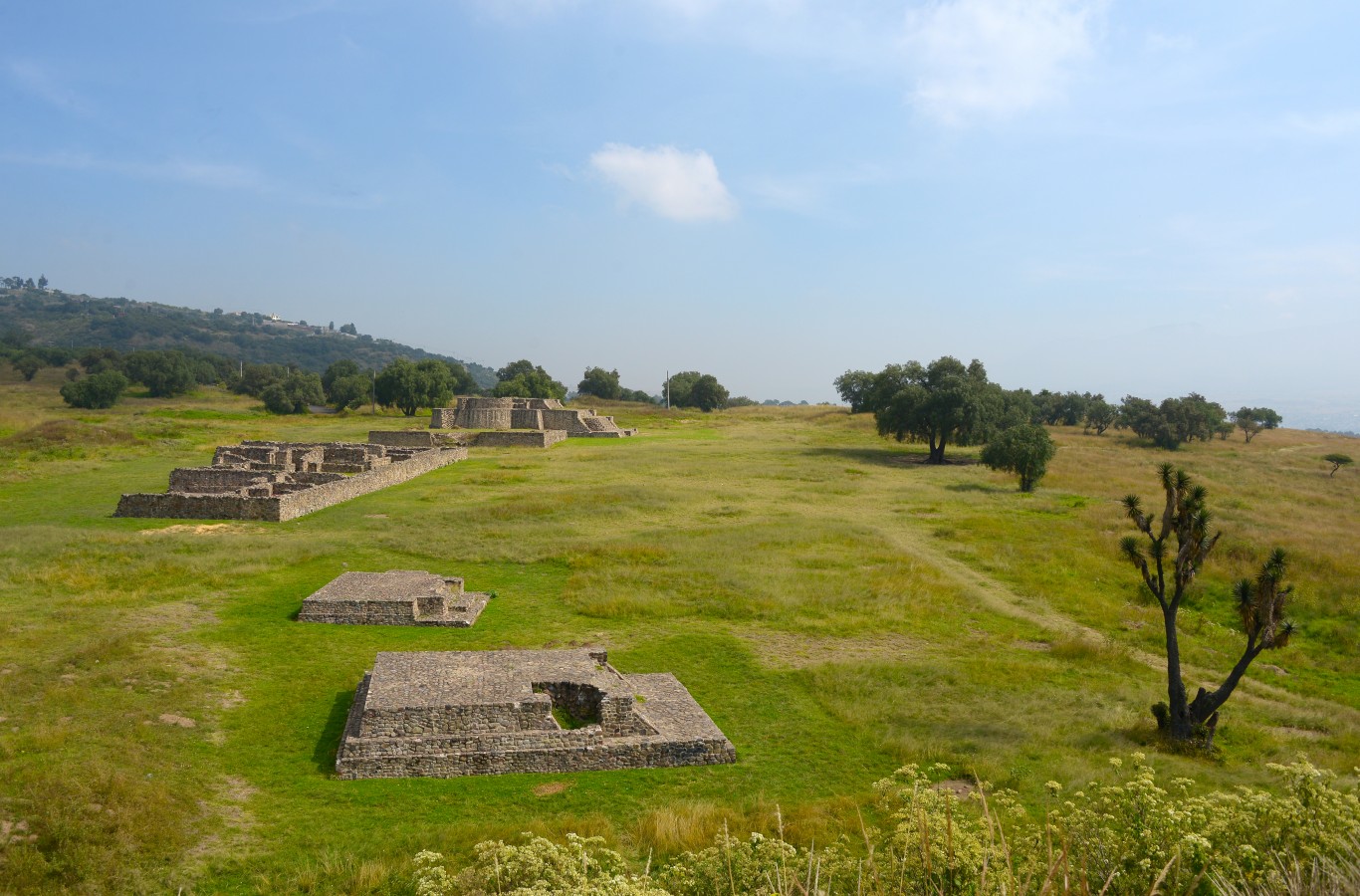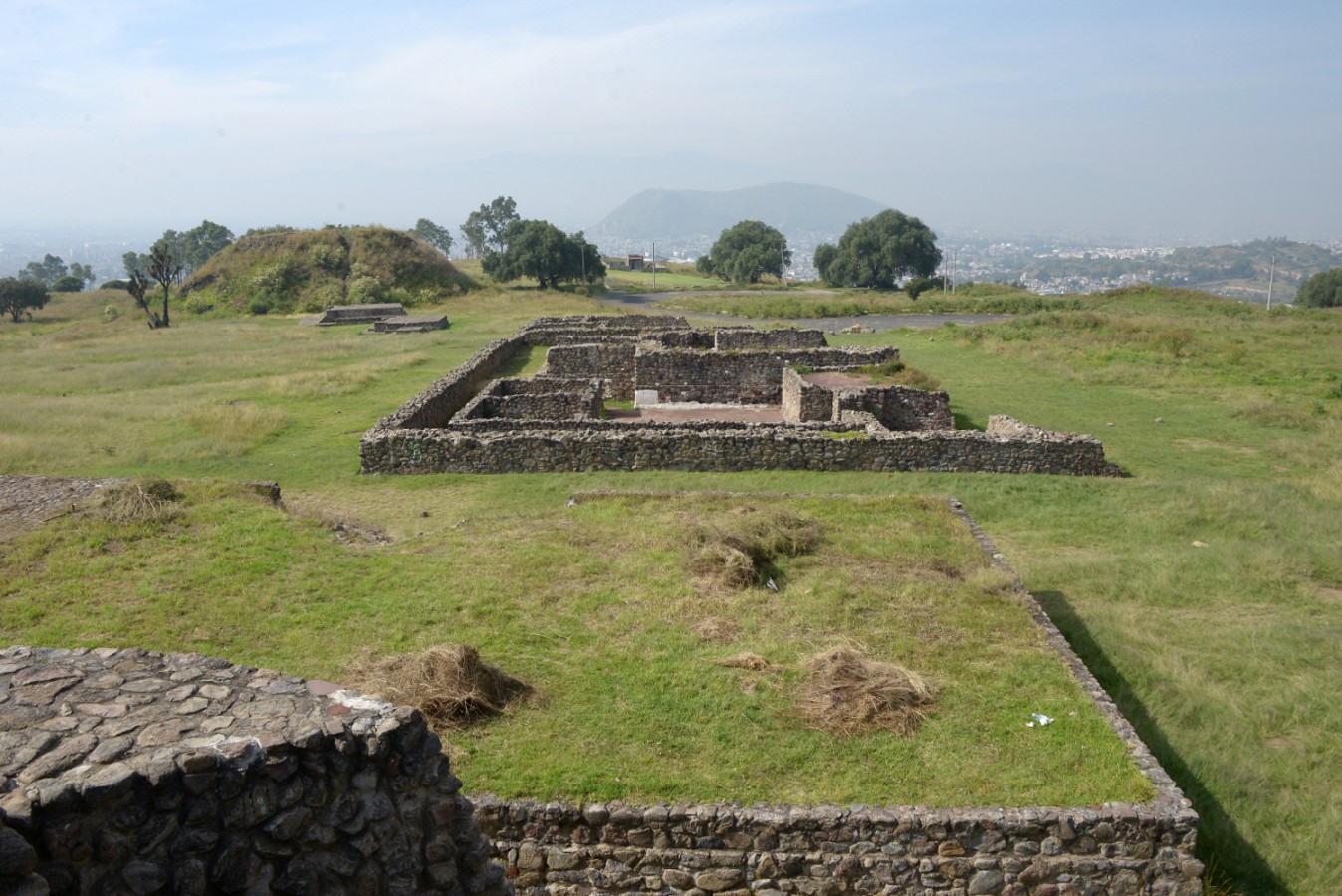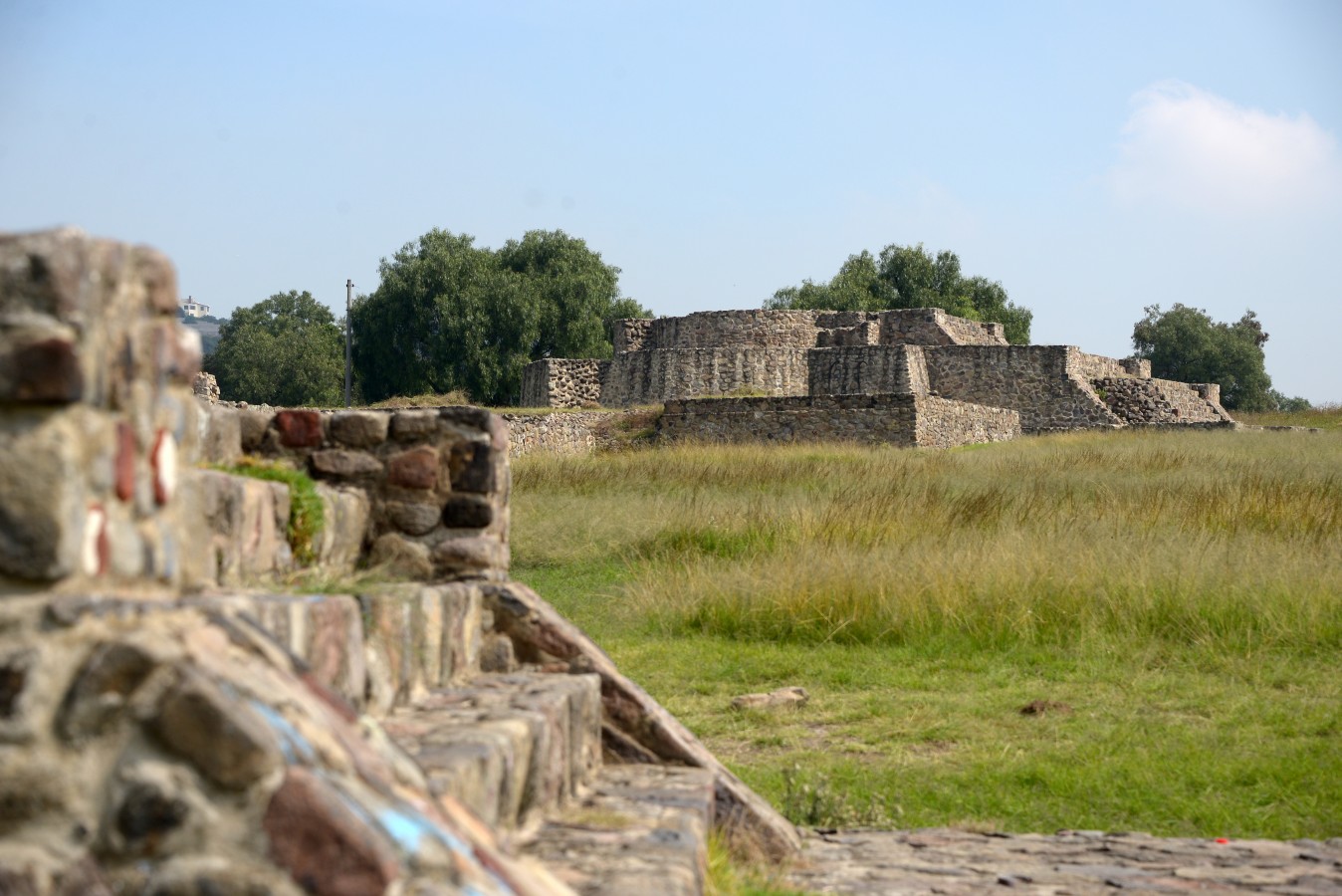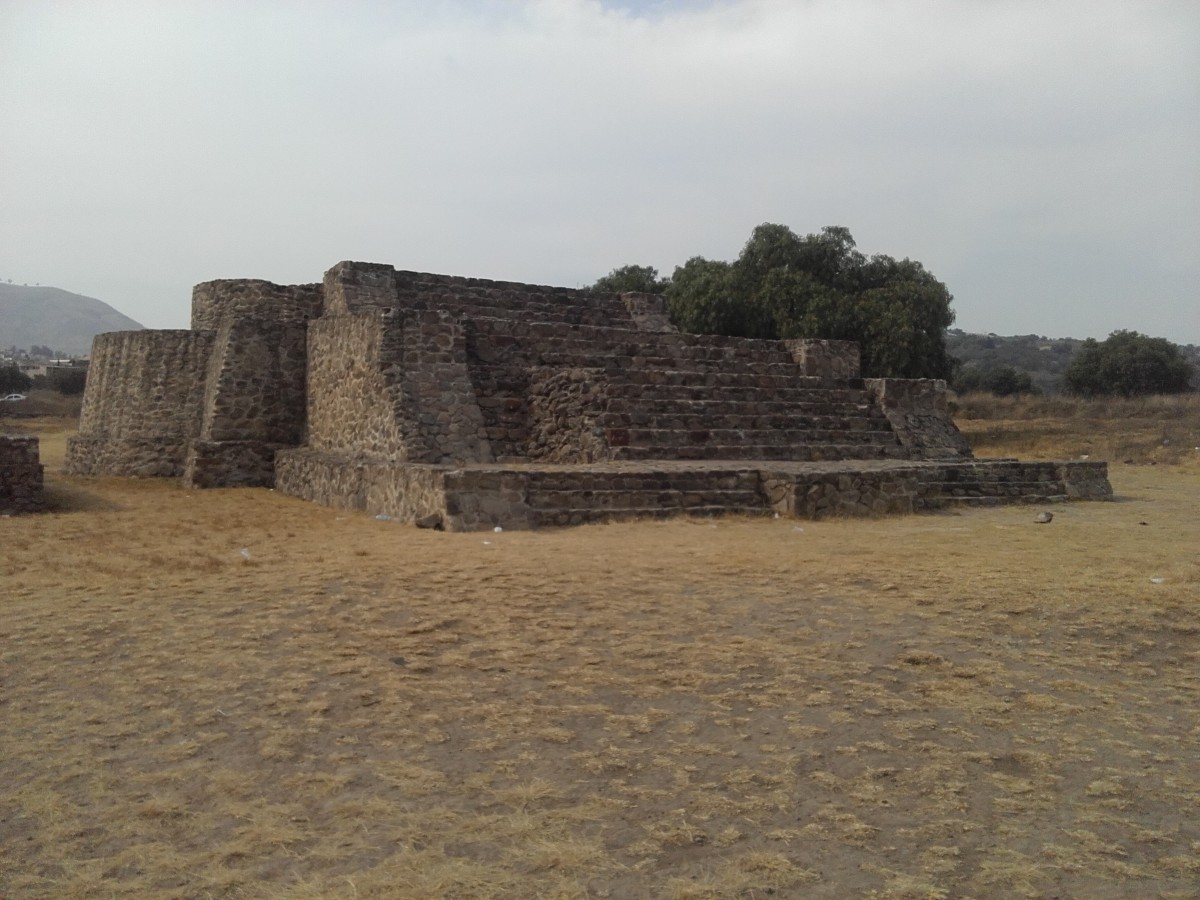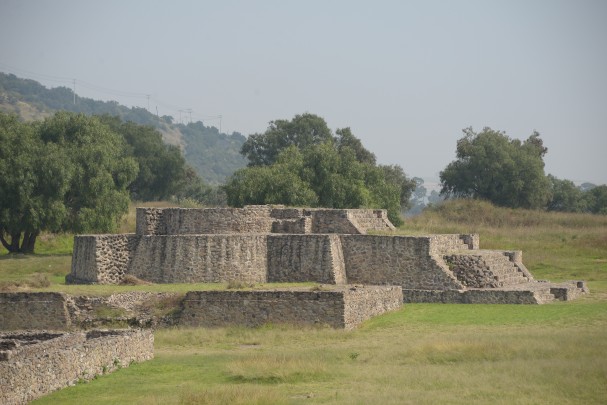Ixtapaluca (Acozac)
On the road of flat stones
Previously known as Old Ixtapaluca, this important ceremonial center in the Valley of Mexico is mentioned in the Xolotl Codex.
About the site
The establishment of this archeological site, built on the plateau of the Cerro de Moctezuma, corresponds to the Azteca I phase. It was continuously occupied until the arrival of the Spanish, meaning it was active throughout the Postclassic period (900-1521). It takes its name from the Hacienda Acozac, erected in the place known as Ixtapaluca Viejo, which in the pre-Hispanic era was called Tlazallan-Tlallanoztoc and, according to the Xolotl Codex, it was the seat of the grandson of Xolotl Techotlallatzin.
The area was part of the Acolhuacan, whose seat was located in Texcoco. Some documents relate that Tezozomoc, Lord of Azcapotzalco, in an attempt to conquer Acolhuacan, attacked Ixtapallocan by surprise, but it was defended by its leaders and the attack was repelled. Ixtlilxochitl Ome Tochtli, tlatoani of the Acolhua empire, established garrisons in Acozac and the Lord of Ixtapalocan became chief of the border. The Lordship of Chalca fought fiercely for the dominion of Ixtapalocan until, during the government of Nezahualcoyotl, the city became part of Acolhuacan.
The first archeological exploration was carried out in 1962. Some years later, in 1973, the buildings that can currently be visited were explored and consolidated: the Circular Temple and the Palace. The Circular Temple is dedicated to the cult of Ehecatl, god of the wind, and presents three stages of construction, while the Palace is an enclosure composed of rooms and courtyards where some red stucco plasterwork is preserved. To one side of the Palace four altars were found with a square floor plan and stepped volumes, as well as a building of greater dimensions, the Basamento Mayor, Templo Mayor or Great Platform, in front of which there is a square with an altar in the center that is still to be explored.
During the archeological work, pottery from the Azteca I and Azteca II phases was discovered, which coincides with the reign of Techotlalltzin, and the last period of occupation corresponds to the Aztec III phase (1430-1521).
The area was part of the Acolhuacan, whose seat was located in Texcoco. Some documents relate that Tezozomoc, Lord of Azcapotzalco, in an attempt to conquer Acolhuacan, attacked Ixtapallocan by surprise, but it was defended by its leaders and the attack was repelled. Ixtlilxochitl Ome Tochtli, tlatoani of the Acolhua empire, established garrisons in Acozac and the Lord of Ixtapalocan became chief of the border. The Lordship of Chalca fought fiercely for the dominion of Ixtapalocan until, during the government of Nezahualcoyotl, the city became part of Acolhuacan.
The first archeological exploration was carried out in 1962. Some years later, in 1973, the buildings that can currently be visited were explored and consolidated: the Circular Temple and the Palace. The Circular Temple is dedicated to the cult of Ehecatl, god of the wind, and presents three stages of construction, while the Palace is an enclosure composed of rooms and courtyards where some red stucco plasterwork is preserved. To one side of the Palace four altars were found with a square floor plan and stepped volumes, as well as a building of greater dimensions, the Basamento Mayor, Templo Mayor or Great Platform, in front of which there is a square with an altar in the center that is still to be explored.
During the archeological work, pottery from the Azteca I and Azteca II phases was discovered, which coincides with the reign of Techotlalltzin, and the last period of occupation corresponds to the Aztec III phase (1430-1521).
Did you know...
- The restored structures date from the city's period of greatest splendor, which was during the Late Postclassic (1200-1430).
- The Palace was most likely the residence of the ruling and priestly elite.
- The area still contains numerous mounds to be excavated.
Practical information
Temporarily closed
Monday to Thursday from 9:00 to 16:00 hrs
Free entry
Se localiza en el municipio de Ixtapaluca, Estado de México.
From Mexico City, take Federal Highway 190 towards Puebla and at km 30 turn left onto the Acozac road towards the Acozac Golf Club. Take the exit for Ceolitzin Avenue and finally turn right towards Alcanfor.
Services
-
+52 (722) 167 1325
-
This email address is being protected from spambots. You need JavaScript enabled to view it.
Directory
Responsable
María Olivia Torres Cabello
This email address is being protected from spambots. You need JavaScript enabled to view it.
+52 (722) 213 9581

